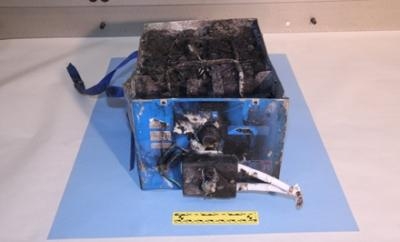Tue, Mar 12, 2013
First Step In The Airplane's Return To Flight
The FAA has approved the Boeing Commercial Airplane Company's certification plan for the redesigned 787 battery system, after thoroughly reviewing Boeing’s proposed modifications and the company’s plan to demonstrate that the system will meet FAA requirements. The certification plan is the first step in the process to evaluate the 787’s return to flight and requires Boeing to conduct extensive testing and analysis to demonstrate compliance with the applicable safety regulations and special conditions.

“This comprehensive series of tests will show us whether the proposed battery improvements will work as designed,” said Transportation Secretary Ray LaHood (pictured, left). “We won’t allow the plane to return to service unless we’re satisfied that the new design ensures the safety of the aircraft and its passengers.”
The battery system improvements include a redesign of the internal battery components to minimize initiation of a short circuit within the battery, better insulation of the cells and the addition of a new containment and venting system.
“We are confident the plan we approved today includes all the right elements to conduct a comprehensive evaluation of the battery system redesign,” said FAA Administrator Michael P. Huerta (pictured, right). “Today’s announcement starts a testing process which will demonstrate whether the proposed fix will work as designed.”

The certification plan requires a series of tests which must be passed before the 787 could return to service. The plan establishes specific pass/fail criteria, defines the parameters that should be measured, prescribes the test methodology and specifies the test setup and design. FAA engineers will be present for the testing and will be closely involved in all aspects of the process.
The FAA also has approved limited test flights for two aircraft. These aircraft will have the prototype versions of the new containment system installed. The purpose of the flight tests will be to validate the aircraft instrumentation for the battery and battery enclosure testing in addition to product improvements for other systems.
The FAA will approve the redesign only if the company successfully completes all required tests and analysis to demonstrate the new design complies with FAA requirements. The FAA’s January 16, 2013 airworthiness directive, which required operators to temporarily cease 787 operations, is still in effect, and the FAA is continuing its comprehensive review of the 787 design, production and manufacturing process.
More News
He Attempted To Restart The Engine Three Times. On The Third Restart Attempt, He Noticed That Flames Were Coming Out From The Right Wing Near The Fuel Cap Analysis: The pilot repor>[...]
Make Sure You NEVER Miss A New Story From Aero-News Network Do you ever feel like you never see posts from a certain person or page on Facebook or Instagram? Here’s how you c>[...]
From 2009 (YouTube Edition): Leading Air Show Performers Give Their Best Advice for Newcomers On December 6th through December 9th, the Paris Las Vegas Hotel hosted over 1,500 air >[...]
Aero Linx: NASA ASRS ASRS captures confidential reports, analyzes the resulting aviation safety data, and disseminates vital information to the aviation community. The ASRS is an i>[...]
“For our inaugural Pylon Racing Seminar in Roswell, we were thrilled to certify 60 pilots across our six closed-course pylon race classes. Not only did this year’s PRS >[...]
 NTSB Final Report: Rutan Long-EZ
NTSB Final Report: Rutan Long-EZ ANN FAQ: Turn On Post Notifications
ANN FAQ: Turn On Post Notifications Classic Aero-TV: ICAS Perspectives - Advice for New Air Show Performers
Classic Aero-TV: ICAS Perspectives - Advice for New Air Show Performers ANN's Daily Aero-Linx (06.28.25)
ANN's Daily Aero-Linx (06.28.25) Aero-News: Quote of the Day (06.28.25)
Aero-News: Quote of the Day (06.28.25)




